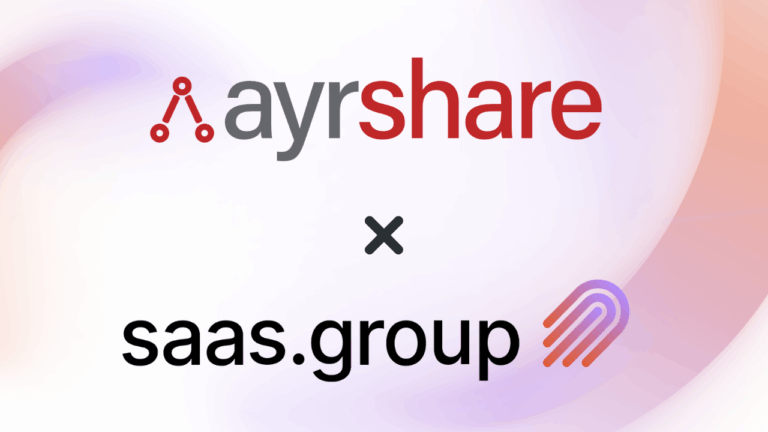The acquisition process can be confusing to founders and teams, and it doesn’t stop when the deal is signed. We sat down with Lewis Singleton, the M&A Integration Manager at saas.group to shed some light on the strategies that set saas.group apart in the ever-evolving landscape of acquisitions.
From tools and processes to maintaining brand independence and prioritizing team well-being, Lewis gives a glimpse into saas.group‘s commitment to founder-friendly, seamless integrations.
- What is a Post-Merger integration?
Post-Merger integration or PMI is used to describe the time after a company is bought when the two companies become one. At saas.group we should really call it post-acquisition integration (we haven’t done any mergers) but PAI just doesn’t have the same ring to it!
- What are the post-acquisition integration tools?
We don’t need much – Google Workspace to create presentations, notes, and spreadsheets and Asana to track tasks. There are other task tracking tools that are available but we try to keep it simple and unified. Some teams use more purpose-built tools that encapsulate risk management, synergy tracking etc. but we’re getting on fine with Asana for now.
- How fundamentally different is the PMI process at saas.group?
The saas.group USP is that we’re founder-friendly, and this continues post-sale. Essentially we take value preservation very seriously meaning
- No big scary rebrand – we always keep the name and the identity of the company intact.
- No stripping apart the organization into a functional model – every brand remains standalone with its unique processes. Although lately we’re working more towards introducing more unified tools for the teams, we’re also mindful of the processes they have established over the years.
- Generally, no forcing square pegs into round holes! – if we buy a company, we trust that the founders and the team know the way they operate best. They’ve come this far to be successful and ultimately attractive for us to welcome into the family. So, why change fundamental things? We act as advisors but never push a specific agenda onto our brands.
We see ourselves as custodians and exist to support the brand team rather than dictate its future.
It doesn’t mean that there are no changes that need to be made. We try to use all our operational experience to give the best advice to the teams on what could be optimized for future success. What we don’t do is essentially force them to make those changes but rather have an open conversation and try to show why we think it would be the best-case scenario.
- How does keeping the brands independent affect the PMI process?
In a traditional PMI, pretty much the whole company is altered which is a massive upheaval, and disruptive for a long time till a positive outcome is reached (if ever). By keeping the brands independent, there’s a lot more focus on what actually matters – delivering service to customers. We respect the brands and share our perspectives and opinions to help them make better decisions.
An acquisition can be a stressful process no matter how transparent or streamlined it is. So our goal is to make the “integration” part as smooth as possible while still keeping a sharp focus on delivering the best product to the customers and helping brands take it to the next level.
- How does day one of PMI look? When is it?
As a result of our differentiated approach, day one is usually not such a big deal. In a typical deal for us the founder would announce the transaction to the team in the morning, and by lunchtime we’ll be on a Google Meet together, running through some high-level details on the news and introducing ourselves more informally. It’s all fairly measured and relaxed with hopefully a pinch of excitement also.
We also have programs that anyone in the group can join to meet the new team, tell them about their role in the company, and “break the ice”, per se. We find it really beneficial since we’re a remote-first company and bringing people together helps a lot with embracing the culture we’re trying to build.
- Can you share a checklist that you usually go through during the process?
Sure, just leave a comment saying “I LOVE CHECKLISTS” and I’ll DM it over!
- What is usually the most challenging part of PMI? Can you share a story?
No matter how much you try to simplify things, PMI is complicated and there’s a lot to do. A problem I see a lot with our brand teams is they can start to become overwhelmed by the variety and depth of actions that occur during a PMI. Recently, a leader came to me with this feedback and we altered our approach slightly to clearly identify the high-priority tasks vs items that can be delegated or delayed (as much as we might try to avoid delay!).
- What is your biggest hack for successful integration?
A commonly overlooked part of integration is also the first step you should take – assure your team that they still have a job and that they are valued post-acquisition. If you skip this step you’ll find presentations on strategy and PMI plans will be of little value. In terms of how to do this, we find the more ways the better – group presentations, 1-to-1s, emails, chat, whatever the team needs to feel secure so that they can focus on their day jobs and the additional tasks which inevitably will arrive.
saas.group‘s approach to Post-Merger Integration stands out for its commitment to founder-friendliness and brand autonomy. By preserving the unique identity of each acquired company, and acting as custodians rather than imposing directives, we aim to support brands in their natural trajectory while offering valuable advice for optimization. By minimizing disruption for both founders and their teams, we try to ensure the most positive experience for all.
If our values speak to you and resonate with how you do business, get in touch. Discuss your options with our M&A team: Dirk (dirk@saas.group) or Pavel (pavel@saas.group). Learn more about how we grow acquired brands on our blog and podcast pages.
Table of Contents
Weekly newsletter
No spam. Just the latest news and articles from the world of SaaS and Acquisitions.




